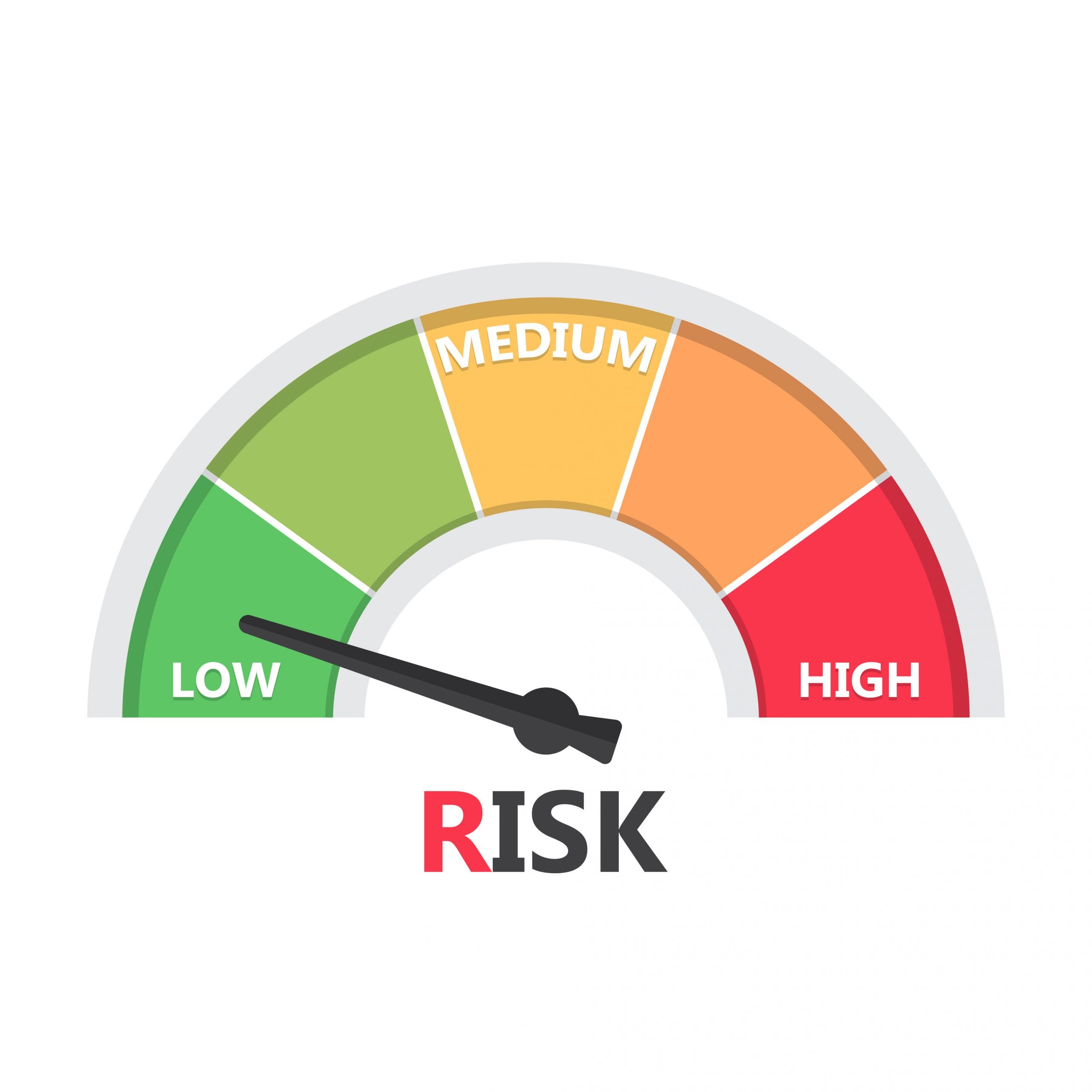News
The U.S. is officially in bear market territory
Stocks fell sharply again this week, sending the S&P 500 into correction territory and leading to the first official bear market since 2020. Here's what you need to know about it all.
Advertisement
Learn how a bear market works and what it means for you and your investments.

If you’re part of the investing mania that happened during the pandemic, or if you own any retirement plans like a 401(k), it’s time to get ready for a bumpy ride. That is because for the first time in almost two years, the stock market has officially crossed into a bear market territory. Worries about the inflation have sent the S&P 500 on a downward spiral. The index crashed more than 20% from its record levels early this year.
This not-so-great milestone is just another low point for the stock market, which has been shaken by an increase of sell-offs in the past few months. Last Monday, the S&P fell close to 4% as almost every component finished the day with significant losses. On Tuesday, stocks continued to tumble. On Wednesday, they turned upward for a bit after the Federal Reserve scheduled meeting that raised interest rates by 75 basis points in another effort to fight the ever-so-stubborn inflation that’s plaguing the country.
No one can know for sure how long this bea market will last. However, investors can look for historical examples to better prepare for it. Below, you’ll find everything you need to know about what is going on and what you can do about it.
You will be redirected to another website
You’ll receive messages for less than 1 week, with a maximum of 1 message per day. You can unsubscribe anytime by replying STOP. By submitting this form, I confirm that I am 18+ years old and agree to the Privacy Policy and Terms and Conditions. I also provide my signature, giving express consent to receive informational messages via automated emails, SMS, MMS text messages, and other forms of communication. Message frequency may vary as part of our good-faith effort to respond to your inquiry. Message and data rates may apply. Text STOP to cancel. I understand that my consent to receive communications is not a condition of purchase and that I may revoke my consent at any time.
Advertisement
What does bear market mean?
This investment term is used by Wall Street investors to describe a continuous period when equity markets are down a minimum of 20% from their previous high. When the market passes the 20% mark – which is what happened last Monday with the S&P 500 index – it usually indicates a negative investor sentiment and a broader pessimism about where the economy stands.
These kinds of sharp downturns are not as common as some might think. So far, 14 bear markets have occurred since 1945, including the one we’re in right now. In the past, once they’ve begun, it took about 19 months for stock prices to stabilize. However, that is not a general rule. For some, it takes a lot less time. For instance, the early-pandemic bear market of 2020 carried on for just 33 days.
The longest bear market we’ve had recently lasted about 17 months, right at the start of 2007’s financial crisis. Back then, the S&P 500 dropped by almost 52%. Another example is the bear market that happened in late 2000 that caused many technology companies to file for bankruptcy. That one lasted for almost two years.
Emily Bowersock Hill, chief executive of Bowersock Capital Partners, says that for a bear market to end faster – like in 2020 – something has to happen to get investors excited about the stock market. During 2020’s bear market, investors had new tech companies and the crypto market to help them rebound. Now, the situation is different. Hill believes that in order to turn this negative sentiment around and recover from the current bear market, a couple of unlikely things need to happen. The first is a surprising increase in earnings. The second is an improvement of the conflict happening in Ukraine.
How did we enter the bear market?

After providing significant earnings during the pandemic, the stock market began to deteriorate in early 2022. Some of the factors that contributed to it were worldwide supply chain issues, the war in Ukraine, rising interest rates and a record-high inflation. All of that happening at the same time served to reinforce investors’ concerns and led to the bear market.
Currently, inflation is at a 40-year record high, fueled mainly by the war and rising energy and food prices. Because of that, the Federal Reserve is on a mission to raise interest rates until prices are under control. This aggressive initiative from the Fed usually is enough to make investors nervous. That’s because with high interest rates, the cost of borrowing for corporations and households becomes a lot more expensive. That could eventually stifle the country’s economic growth and cause a recession.
Last week’s inflation report also contributed to the start of this bear market since it presented an even higher-than-expected percentage. After the Fed’s meeting last Wednesday, investors grew even more fearful of an even more aggressive interest rate hike in the next couple of months. However, what is happening right now came as no surprise to Wall Street Experts, since they have been expecting this moment for quite some time.
Advertisement
Is the country on its way to a recession?
A bear market doesn’t necessarily lead to recession. However, it can be a good indicator that one might be on the way. Not only that, but bear markets can help investors predict all sorts of economic situations, like stagflation or treasury bond yields.
The truth is that there is no way of knowing for sure. Financial experts and market watchers all have different opinions on the matter. Some believe a recession is unlikely due to the unemployment rate and the fact that consumers are still spending their money. Others say that there’s no way to avoid a recession in the next couple of years. Especially if inflation continues to rise so quickly and if the war continues.
What should be the next step for investors?

With so much going on, investors might feel the need to pull their money from the market in order to avoid further losses. However, some financial analysts say that is the wrong approach. That is because, historically speaking, bear markets always present unique opportunities for investors to earn more long-term since stock prices are significantly lower.
Selling now could probably save investors some short-term pains. But in doing so, they end up missing out when the market turns back up and end up buying what they sold at a much higher price. If an investor is economically able to do so, putting their money to work while prices are low is a good investment choice.
Still, that is a strategy that might not work for everyone. Before facing the volatility of a bear market, investors need to evaluate what their principal needs are. For example, someone who’s retired and has spending needs. Or rather, someone who relies on their earnings to make money for rent and other necessities. In these cases, before investing, it’s crucial to have an emergency fund of cash flow set aside to last for 10 to 17 months. Stock markets tend to rebound on the long haul, but it may take more than three years out of a bear market before they start paying dividends.
Another essential point for investors is to pay attention to what kind of companies they are investing their money in, since some might present a higher risk. Financial experts advise all investors to be prepared for what’s to come. According to them, this might be one of the longest bear markets the country’s experienced since the early 2000’s.
If you want to invest but don’t want to take too many risks, we can help. Follow the link below and learn about 3 different low-risk investments that can provide reasonable earnings.

The 3 best low-risk and safe investments
Learn the best low-risk investments so you can still make money even during an economic downturn.
Trending Topics

Upgrade Triple Cash Rewards Visa® review: is it legit and worth it?
Upgrade Triple Cash Rewards Visa® gives you cash back and great payment conditions: learn more about this card by reading this review.
Keep Reading
How to buy cheap Avelo Airlines flights
If you want to buy cheap Avelo Airlines flights, you are in the right place. Read to learn how to find flights from $29! Read on!
Keep Reading
Lazy investing for starters: 3 fund portfolio
Looking for a lazy investing portfolio? You need to check out the 3 fund portfolio strategy. It’s profitable, it’s simple and it’s proven.
Keep ReadingYou may also like

Capital One Venture X Rewards Credit Card review: a journey of extra miles starts here
Check out the Capital One Venture X Rewards Credit Card review to find out it's great perks, like extra miles. Read on!
Keep Reading
An Irresistible APR To Smash Debt: PNC Core® Visa® review
Save money on high-interest debts with the PNC Core® Visa® Credit Card - Our review encompasses it all! Enjoy 0% intro APR for 15 months!
Keep Reading
How to move out of your parents’ house [Checklist]
How to move out of your parents' house? This checklist offers everything you need to do before making the big move. Read on!
Keep Reading